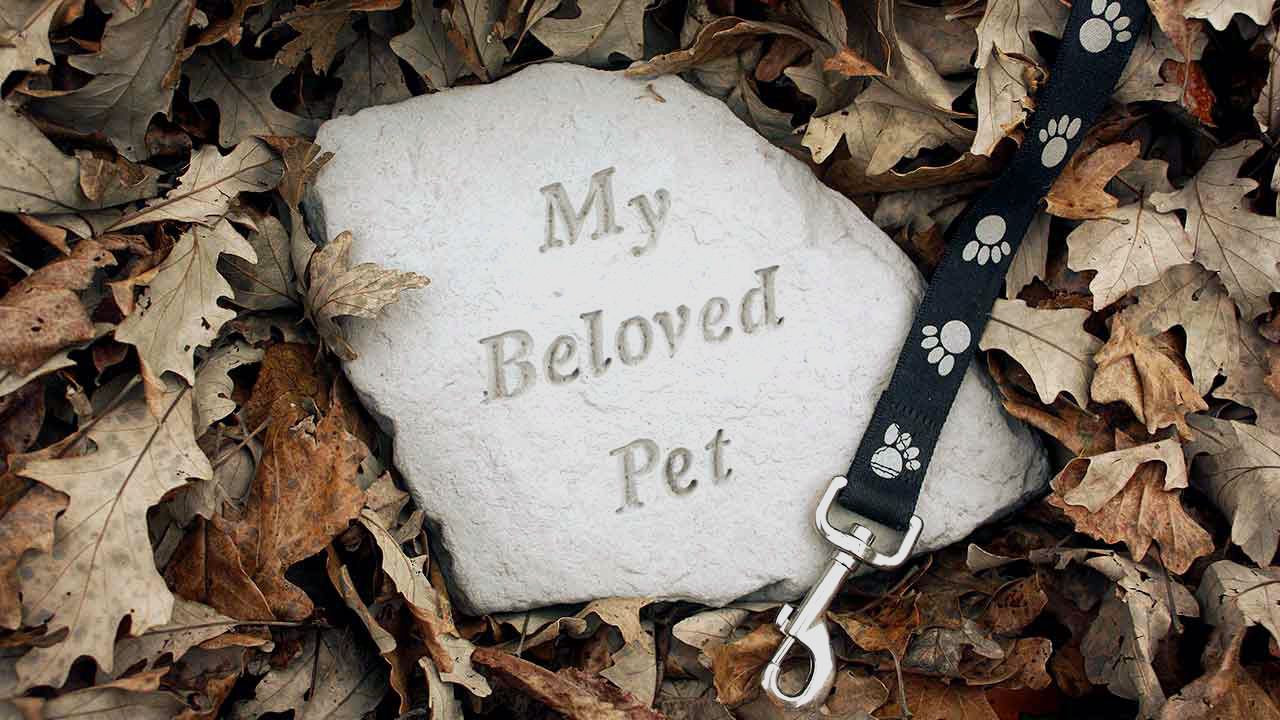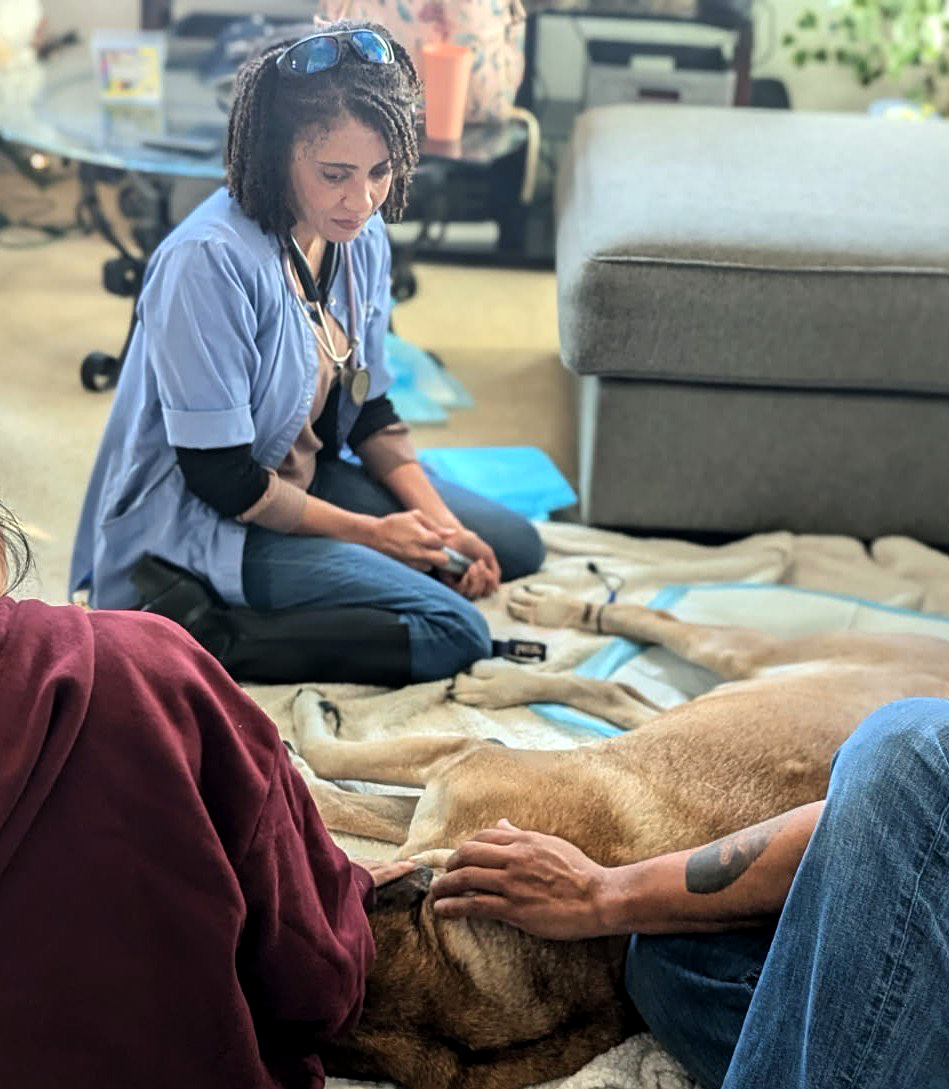
10 Ways To Support Someone Grieving a Dying or Departed Pet: A Guide from CodaPet
By Dr. Karen Whala
Guest Blogger | CodaPet
Losing a pet is one of the most painful experiences a person can face. At CodaPet, we understand that grief around pet loss doesn’t follow a linear path — it weaves through memories, what-ifs, and the longing for one more day. While our existing resources cover ways to cope with loss and care for a pet during grief, one gap we’ve noticed is more guidance for supporters—friends, family members, or caretakers—who want to be there for someone grieving, whether now or in the days leading up to euthanasia. This article aims to fill that gap, offering insight into anticipatory grief, empathetic communication, and legacy work to help both caregivers and those grieving feel seen and supported.
As we should honor the fact that a pet parent’s decision regarding euthanasia or allowing a natural death is deeply personal and uniquely their own, our duty is to consider the pet’s comfort and welfare while also respecting the family’s beliefs, values, and emotional readiness.
When a family wishes to pursue Hospice-Supported Natural Death (HSND), our role is to guide and educate them so that their pet’s final days are as peaceful and pain-free as possible. This means providing clear, compassionate communication about what to expect, how to manage symptoms, and when additional interventions may be needed to prevent suffering.
It’s important to help families understand that some medical conditions lend themselves more readily to a comfortable natural passing—such as advanced kidney disease or diabetes—while others, like congestive heart failure or respiratory distress, may involve unavoidable suffering that humane euthanasia can prevent.
Ultimately, the choice between euthanasia and HSND rests with the pet parent. Our responsibility is to ensure they have the information, emotional support, and veterinary guidance to make the best decision for their beloved companion—with empathy, honesty, and respect.
Now let’s look at 10 ways to support someone grieving a dying or departed pet.

1. Recognizing Anticipatory Grief as Real
Before a pet passes, many pet parents begin to grieve. Known as anticipatory grief, this phenomenon is rife with doubt, guilt, and fear of impending loss. The pet may still be alive, and often their decline is gradual — yet so much of the emotional burden already shifts. Supporting someone during this period means acknowledging that their grief has already begun.
What that looks like:
- They might fluctuate between hopeful treatment plans and dread of what’s coming.
- They might withdraw or become hypervigilant in caring routines, wanting “just one more day.”
- They might feel isolated because many don’t consider grief until after death.
As a supporter, your role is to validate these feelings. You can say things like, “I see how heavy this is,” or “I don’t know what to say — I’m here when you want to talk or sit quietly.” Avoid telling them to be “strong” or “prepare for the inevitable” in a detached way — what they need is your emotional presence.
2. Listen Beyond the Words
People grieving a pet often move between practical worries—like pain management, euthanasia decisions, or financial concerns—and deeply personal emotions such as fear, guilt, or helplessness. Some may openly share these feelings, while others keep them inside.
As a supporter, the most powerful tool you can offer is empathetic listening. Instead of rushing to provide solutions, focus on simply hearing them, mirroring back their emotions with gentle reflections, and allowing space for silence. Sometimes, just sitting quietly, holding a hand, or sending a thoughtful message can mean more than words. By listening first, you’ll gain a clearer sense of whether they need practical support or simply the comfort of emotional space.
3. Offer Practical Help With Sensitivity
When grief is raw, daily tasks can feel monumental. Offering concrete help (not vague “let me know if you need anything”) is meaningful. But the key is framing it without pressure:
- “May I bring dinner on Tuesday evening? No pressure at all if you just want space.”
- “I can help with researching in-home euthanasia or cremation options, if you’d like.”
- “Would it comfort you if I stayed with you while the vet visits happen?”
Remember: the offer is a lifeline, not a burden. Let them decline. Even small acts—like running errands, prepping a quiet corner for reflection, or coordinating with extended family—can ease the weight.
4. Speak Their Pet’s Name (And Invite Others to Do Same)
One of the cruelties of grief is silence. Friends often avoid the pet’s name or even talking about the loss, as though it upsets the griever. But the opposite is more healing: naming validates the bond and affirms the pet’s place in your shared stories.
Encourage the grieving person to reminisce, share photos, or tell a funny moment. If you’re part of their circle, you can gently initiate memories: “Do you remember when Fluffy chased the vacuum cleaner?” Avoid sweeping statements like “It was just a dog/cat.” Instead, use the pet’s name and reflect on their personality or quirks. That helps the griever feel that their loss is visible, not erased.
5. Build Beloved Rituals to Anchor Grief
While memorials and rituals are already a common way to honor a beloved pet, there is special value in co-created or supporter-led rituals, especially when the grieving person feels too overwhelmed to initiate them on their own. You might organize a small in-person or virtual gathering where friends and family share memories, create collaborative “legacy art” like a collage, painting, or slideshow, or plant a tree or garden in the pet’s honor with contributions from others.
Even a simple memory box filled with notes or keepsakes can become a cherished anchor. As a supporter, your role is to coordinate and gently guide these rituals while allowing the grieving person to set the pace and level of participation. Done thoughtfully, these acts provide both structure and emotional release.
6. Encourage Expressive Outlets Beyond Conversation
Some people find it hard to vocalize grief, especially around pets. You can gently introduce alternative expressions:
- Journaling (or letter-writing to the pet)
- Voice or video memos — verbalizing thoughts when crying feels too heavy
- Music playlists that remind them of their pet
- Creative projects — sketching, collage, photo-based journaling
- Memorial websites or social media tributes
Offer to do these with them (for instance: “Would you like me to come over and help sort your photos? We can play music, or sit quietly.”) Again, the offer matters more than the insistence.
7. Be Patient Through Nonlinear Grief
Grief does not follow a set timeline, and months later the bereaved may still experience sudden surges of sadness triggered by anniversaries, familiar scents, moving homes, or even seeing another pet that resembles their own. As a supporter, your role is to continue being present—checking in on significant dates with a simple message, accepting emotional regressions without frustration, and resisting the urge to encourage “moving on.”
Instead, reassure them that healing doesn’t mean forgetting, and focus on offering steady presence rather than limiting support to the immediate aftermath. Often, it is this long-term compassion that makes the deepest difference.
8. Advocate for Grief Support and Professional Help
Sometimes, grief can become too heavy to carry alone. Feelings of guilt, depression, or even avoidance of memories may signal that professional support is needed. As a caring friend, you can gently suggest resources such as pet loss support groups, licensed grief counselors who specialize in animal loss, or crisis hotlines for moments when the pain feels overwhelming. You might also offer practical help by researching local or virtual options, coordinating a first session, or simply reminding them that seeking help is a sign of care and strength, not weakness.
9. Respect That Everyone Grieves Differently
One of the most common tensions in pet loss is mismatched grief styles: while the pet parent may want to reminisce and share memories, others might prefer to stay busy, or even suggest getting a “new pet.” As a supporter, it’s important to honor their timeline and emotional style, avoid dismissive comparisons to human loss, and refrain from pushing for quick closure.
Simple check-ins like, “Would you rather company, a quiet call, or some time alone?” can help you understand their needs in the moment. By recognizing that your role is to be supportive rather than directive, you can avoid unintentionally invalidating their unique grieving process.
10. Transform Grief Into Meaning
Over time, grief often seeks a vessel—something beyond pain. As a caring ally, you can gently help the bereaved imagine how to transform their loss into something meaningful, whether that’s volunteering at an animal shelter, donating in their pet’s name to a cause they would have loved, hosting a yearly memory event, writing a heartfelt tribute, or creating a keepsake that inspires others facing pet loss. You can even take part alongside them, perhaps by organizing a small fundraiser, helping set up a memorial page, or joining them in hands-on supportive work that honors their companion’s memory.
You Are Not Alone
Supporting someone grieving a dying or departed pet is a sacred responsibility. It calls for listening, patience, respect, and creativity. By recognizing anticipatory grief, offering presence rather than answers, co-creating rituals, and helping to transform grief into ongoing legacy, you become a compassionate bridge during one of life’s hardest passages.
At CodaPet, we’re honored to walk this path with you—not only as pet parents but as friends, neighbors, and supporters of those in grief. If you or someone you care about would like further resources, grief counseling referrals, or help planning memorial rituals, please explore our [Pet Loss & Grief resources page] (see CodaPet) or reach out to one of our veterinary experts for guidance. You don’t have to bear this journey in isolation—and your empathy can be one of the greatest gifts.
* * * * 💜 * * * *
 |
Meet the guest blogger, Dr. Karen WhalaDr. Karen Whala is a compassionate veterinarian and co-founder of CodaPet, dedicated to helping senior and ailing pets pass peacefully at home, surrounded by the love of their families. Photo caption: Dr. Karen Whala, DVM, sitting on the floor, pictured during a home euthanasia. |
( Please show us all that you like this article by sharing, commenting, and/or giving this a "LIKE" on Facebook. Photo: "My Beloved Pet" memorial stone with leash laying on top - 10 Ways to Support Someone Grieving a Dying or Departed Pet: A Guide from CodaPet. )
